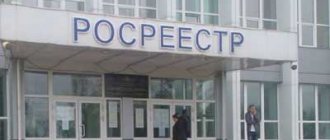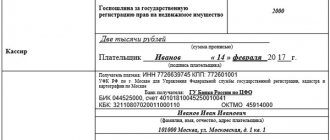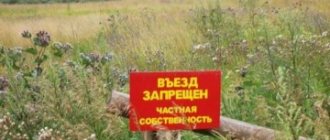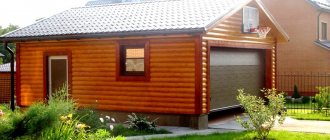Organizing a gardening partnership is quite a difficult and responsible task, requiring organizational skills, but in the future it fully justifies all the hopes placed on it.
Competent, professional execution of the required documents and the involvement of current members of the partnership in joint active activities will bring the desired results.
To register a gardening partnership you will need:
- charter of the partnership;
- opening a valid bank account;
- consent of future members of the partnership.
How to do it all
Charter of the gardening partnership
Keep in mind that joining such a non-profit gardening partnership is purely voluntary.
No one should force the owner of a garden plot to join such an organization. The actions of the gardening partnership are regulated by the charter, which is adopted at the general meeting in accordance with current legislation. The charter must reflect the following basic provisions:
- name of the partnership,
- goals of the organization,
- delegated powers,
- finance and investing,
- mandatory annual reports.
It is clear that it is better to entrust the accounting services of a garden partnership to professional financiers.
The documents must indicate the actual location of the gardening partnership and the time for which it is created. The goals of the partnership must satisfy all its members. Decide what you will need for full operation and functioning, what activities you plan to carry out in the near future on your garden plots.
Territory planning and development
Please be aware that planning and development of the territory can only be carried out according to an approved project. Such actions are carried out only in accordance with adopted legislative acts.
Bank account
Open an account in a reliable bank in which contributions from all participants of the partnership will be kept; all transactions should be documented. Try to organize a full level of trust by warning all participants about the complete confidentiality of the activities of the gardening partnership. Such an organization implies working on trust, but it is still better to play it safe if you are not sure of the integrity of some members.
It is better to conduct all the most important matters together in order to avoid misunderstandings and unnecessary questions. If this is stipulated in the charter, issue the necessary powers of attorney. This approach to business will be the most reasonable.
Start by creating an initiative group, count votes and draw up minutes of the general meeting. Next, you can go through the registration procedure, providing for this the decision of the partnership participants and the adopted charter.
What you need to know and what to check before buying a plot of land in SNT
It is important to consider that if, as a document of ownership, the owner of the plot offers you not a certificate, but a garden book, then this indicates that he does not have rights to this land. As part of such a transaction, you will not become the full owner of the land, but will only receive the right to dispose of it. In this situation, the most likely owner of the land is the state or municipality.
If there is a building on the land, it is worth asking the owners about all its details : the year of construction, the materials used, the degree of wear and possible defects. All this directly affects the price of the house. Thus, the price of a brick house usually starts from 2 million rubles, while a dacha made of timber or a panel structure can cost from 500 thousand rubles. up to 1.5 million rubles
We recommend reading: Benefits for veterans of labor for paying for a TV antenna
Law on SNT from 2020: latest news for summer residents
After the New Year, summer residents will face serious changes. The new law on gardening partnerships from January 1, 2020 (hereinafter referred to as the Law) is already coming into force, and many still do not know what to expect.
Full name of the document: Federal Law of July 29, 2017 No. 217-FZ
“On the conduct of gardening and vegetable gardening by citizens for their own needs and on amendments to certain legislative acts of the Russian Federation”
.
The regulatory act replaced the outdated Federal Law-66, adopted back in 1998, the latest version of which is still in force. In the article we will look at what rules the SNT law introduces in 2020, the latest news on the topic, the pitfalls of the regulation and significant innovations. To begin with, it is worth saying that many summer residents and landowners do not fully understand the essence of the upcoming changes.
Hence the huge number of questions that lawyers who advise citizens online receive.
Technical rules for filling out some lines in SNT in 2020
According to Article 176 of the Tax Code, tax authorities monitor compliance with the procedure for registering SNT:
1) when moving, selling and (or) shipping goods across the territory of the Republic of Kazakhstan;
2) when importing goods into the territory of the Republic of Kazakhstan from the territory of states that are not members of the Eurasian Economic Union and member states of the Eurasian Economic Union;
3) when exporting goods from the territory of the Republic of Kazakhstan to the territory of states that are not members of the Eurasian Economic Union and member states of the Eurasian Economic Union.
The obligation to register SNT arises within the following periods:
1) when moving, selling and (or) shipping goods across the territory of the Republic of Kazakhstan - no later than the day the movement, selling and (or) shipping of goods begins;
2) when importing goods into the territory of the Republic of Kazakhstan:
from the territory of states that are not members of the Eurasian Economic Union - no later than the day following the day of release of goods into free circulation;
from the territory of the member states of the Eurasian Economic Union - no later than the day preceding the day of crossing the State border of the Republic of Kazakhstan;
3) when exporting goods from the territory of the Republic of Kazakhstan to the territory of states that are not members of the Eurasian Economic Union and member states of the Eurasian Economic Union - no later than the day the movement, sale and (or) shipment of goods begins.
The list of goods that are subject to the obligation to register SNT, the rules of registration and the form of SNT are approved by the Order of the First Deputy Prime Minister of the Republic of Kazakhstan - the Minister of Finance of the Republic of Kazakhstan dated December 26, 2020 No. 1424 “On approval of the List of goods that are subject to the obligation to register accompanying invoices for goods, as well as the Rules for registration and their document flow”, registered with the Ministry of Justice of the Republic of Kazakhstan on December 30, 2020 No. 19784 (hereinafter referred to as the Rules for SNT).
SNT structure when creating SNT
| Props code | Props name | Characters | Props type | Type of props (OH, OO, BUT) | Checking the filling | Error messages in the ESF IS | ||||
| Minimum | Maximum | |||||||||
| 1 | 2 | 3 | 4 | 5 | 6 | 7 | ||||
| Section A “General Section” | ||||||||||
| 1 | Registration number of SNT accounting system | 1 | 30 | Numerical | ABOUT* | 1. Check for mandatory completion. 2. Checking for the uniqueness of the value within the current date, within one NP. 3. When filling out on a WEB resource, it is filled in manually if the NP does not have an accounting system (1C, SAP and others) When working via the API, the account number is transmitted via the API | 1. If the details are missing, the message: “Accounting system number is missing.” 2. If there is a discrepancy, the message: “SNT with the same number and date already exists, please indicate a different number.” | |||
| 2 | Date of issue of SNT | Date (DD.MM.YYYY) | ABOUT | 1. When filling out on a WEB resource, automatic filling is with the current date. 2. Blocked for editing on WEB resource 3. When working through the API, the date of SNT extract from the accounting system is transmitted via IPA; the date must be equal to the current date. | ||||||
| Entering paper SNT | ||||||||||
| 2.1 | Date of issue of SNT on paper | Date (DD.MM.YYYY) | BUT | When filling out on the WEB resource and selecting the reason “There was no requirement for an extract”, the following checks are carried out for the specified date: 1. If the date of the paper SNT is before 01/01/2019, the date is not checked 2. If the date of the paper SNT is 01.01.2019 and later, then the validity of the “SNT” attribute is checked for the HS code G1.4, G10.7 on the date of the paper SNT for signs of origin of goods 4 and 5. If the validity of the “SNT” sign has begun , then it displays the error: | 2) You cannot enter a paper SNT with the reason “There was no requirement to issue a SNT.” | |||||
| 2.1.1 | Cause | Symbolic | UO | Select from the directory:
| ||||||
| 3 | Product shipment date | Date (DD.MM.YYYY) | BUT | The date must be equal to or greater than the current date. The date may be one less than the current one if the recipient category contains the value “Retail Sales”. | ||||||
| 4 | Consignment note | |||||||||
| 4.1 | Number | 1 | 10 | Symbolic | UO | Required to fill out if:
| If not filled in for the first reason, the message: “The TTN number must be filled in when Section K “Data on cargo transported by road transport” is not filled out. If not filled in for the second reason, the message: “The TTN number must be filled in when the supplier’s IIN/BIN differs from the recipient’s IIN/BIN and the mode of transport is selected as “automobile” | |||
| 4.2 | date | Date (DD.MM.YYYY) | UO | 1) Mandatory if at least one field in section K is not filled in. Mandatory to fill out if field 4.1 TTN number is filled in | If not completed, message “The TTN date must be filled in when the “TTN Number” is filled in | |||||
| 7 | Import of goods into the territory of the Republic of Kazakhstan | BUT | Mutually exclusive categories. Possibility to choose one of categories 7.1 -7.5 | |||||||
| 7.1 | Import | Select from a list | UO | 1) It is mandatory to fill out one of the subcategories if o. | If the details are missing, the message: “One of the subcategories of field 7 “Import of goods into the territory of the Republic of Kazakhstan” must be indicated. | |||||
| 7.2 | Re-import | Select from a list | UO | |||||||
| 7.3 | Import for processing | Select from a list | UO | |||||||
| 7.4 | Temporary importation | Select from a list | UO | |||||||
| 7.5 | Import of temporarily exported goods | Select from a list | UO | |||||||
| 7.6 | Planned date of import of goods | Date (DD.MM.YYYY) | UO | 1. Mandatory to fill out if o. 2) Check by date, the date cannot be less than the current one. | 2. If the date is less than the current one, the message: “The planned date of import of the goods cannot be less than the current one.” | |||||
| 7.7 | Planned checkpoint | 1 | 8 | Numerical | UO | 1) Mandatory to fill out if o. 2) Check for compliance of the specified item with the field “46.1 Type of transport”, when selecting the field:
3) When selecting o or “f. Multimodal” field “46.1 Type of transport” is optional. | 2) If there is a discrepancy, message “7.7 Planned checkpoint” does not correspond to the type of transport in the field “46.1 Type of transport”. | |||
| 8 | Export of goods from the territory of the Republic of Kazakhstan | BUT | Mutually exclusive categories. Possibility to choose one of categories 8.1 - 8.5. | |||||||
| 8.1 | Export | Select from a list | UO | It is mandatory to fill out one of the subcategories if Fr. | If the details are missing, the message: “One of the subcategories of field 8 “Export of goods from the territory of the Republic of Kazakhstan” must be indicated.” | |||||
| 8.2 | Re-export | Select from a list | UO | |||||||
| 8.3 | Removal for processing | Select from a list | UO | |||||||
| 8.4 | Temporary removal | Select from a list | UO | |||||||
| 8.5 | Export of temporarily imported goods | Select from a list | UO | |||||||
| 8.6 | Planned date of goods removal | Date (DD.MM.YYYY) | UO | 1) Mandatory to fill out if o. 2) Check by date, the date cannot be less than the current one. | If the date is less than the current one, the message: “The planned date of goods removal cannot be less than the current one.” | |||||
| 8.7 | Planned checkpoint | 1 | 8 | Numerical | UO | 1) Mandatory to fill out if o. 2) Check for compliance of the specified item with the field “46.1 Type of transport”, when selecting the field:
3) When o or “f. Multimodal" "46.1 Type of transport" is optional. | 2) If there is a discrepancy, the message “8.7 Planned checkpoint” does not correspond to the type of transport in the field “46.1 Type of transport”. | |||
| 9 | Moving goods | BUT | When checking the checkbox in field 9.1, field 9.2 is not filled in and vice versa | |||||||
| 9.1 | within one person on the territory of the Republic of Kazakhstan | Select from a list | UO | 1. When setting the checkbox, the KZ value must be specified in the fields:
2) in the fields “16. IIN/BIN" and "26. IIN/BIN” must indicate the same IIN/BIN or the structural unit of the head person may be indicated. 3)If the values in the fields “16. IIN/BIN" and "26. IIN/BIN" do not match, the connection between the structural unit and the parent company is checked. If there is a discrepancy, the message: “When moving goods within the same person, one IIN/BIN must be indicated or the connection between the structural unit and the parent company was not found.” | 1) “When moving goods within one person on the territory of the Republic of Kazakhstan, in the fields “22 Code of country of dispatch/shipment”, “32. Delivery/delivery country code" must indicate the country "Kazakhstan" 2) “When moving goods within one person, one IIN/BIN must be indicated or the connection between the structural unit and the parent enterprise is not found.” | |||||
| 9.2 | within one person within the EAEU | Select from a list | UO | When setting the checkbox, the values of the EAEU country must be indicated in the fields:
| “If there is a discrepancy, the message: “When moving goods within the same person within the EAEU, in the fields “21. Supplier registration country code", "31. Recipient's country of registration code" The EAEU country code is indicated incorrectly." | |||||
O*-required.
BUT - not obligatory, UO - conditionally obligatory. Technical description of the SNT structure: Excise and other goods (except for digital markings)
| Props code | Props name | Characters | Props type | Type of props (OH, OO, BUT) | Checking the filling | Error messages in the ESF IS | |
| Minimum | Maximum | ||||||
| 1 | 2 | 3 | 4 | 5 | 6 | 7 | |
| 10 | Excise and other goods (except for digital markings) | Checkbox | BUT | Mutually exclusive categories. Possibility of choosing one of categories 10.1 -10.7. | |||
| 10.1 | Ethanol | Checkbox | BUT | When you install the checkbox, section G2 “Ethyl alcohol” opens | |||
| 10.2 | Wine material | Checkbox | BUT | When you install the checkbox, the G3 “Wine Material” section opens | |||
| 10.3 | Beer and beer drinks | Checkbox | BUT | When you install the checkbox, section G4 “Beer and beer drinks” opens | |||
| 10.4 | Alcohol (except beer) | Checkbox | BUT | When you install the checkbox, section G5 “Alcohol products (except beer and beer drinks)” opens. | |||
| 10.5 | Petroleum products | Checkbox | BUT | When you install the checkbox, section G6 “Data on petroleum products” opens | |||
| 10.6 | Biofuel | Checkbox | BUT | When checking the checkbox, section G7 “Biofuel Data” opens | |||
| 10.7 | Tobacco products | Checkbox | BUT | When you install the checkbox, section G8 “Data on tobacco products (excluding digital marking)” opens. | |||
| 11 | Goods subject to export control (dual use, military use) | Checkbox | BUT | When checking the checkbox, section G11 “Data on goods subject to export control (dual-use, military use)” opens. | |||
What to do with abandoned plots in SNT
The resulting total amount of expenses is divided by the number of plots in the partnership or their total area. In this way, the size of the annual membership or target fee is determined for each site, inhabited or abandoned. And the more abandoned plots in the partnership, the wider the “hole” appears in its budget.
We recommend reading: Is the deceased employee of the Ministry of Internal Affairs entitled to a pension if she is disabled
No one could even imagine that in a few decades gardening partnerships would become full-fledged legal entities, with all the ensuing consequences. SNT will have to have a current account, enter into contracts for work, keep accounting records and pay contributions to funds at almost the same level as commercial organizations. That the chairman will work all year round (although this is sometimes not visible to ordinary gardeners), receive a salary and be fully responsible for everything that happens in “his garden”. He must, in addition to organizational work on the repair of roads and fences, fulfill the requirements for garbage removal and fire safety, and also in a short time become an expert in the field of management, accounting, jurisprudence and cadastral issues.
Dacha revolution. How will the new law change life in SNT from January 2020?
On January 1, 2020, the law “On gardening, gardening and dacha non-profit associations of citizens” comes into force, which will determine the rights and responsibilities of gardeners.
Summer residents will face changes regarding the construction of summer houses and their registration, as well as the payment of fees for the maintenance of common property.
The law also introduced a number of amendments that will directly affect owners of garden and vegetable plots. According to the chairman of the Trade Union of Gardeners of Russia Lyudmila Golosova, the new law, in addition to innovations, will also bring some problems for summer residents, since it removes the institution of authorized representatives and general meetings at which estimates confirming the financial activities of SNT are accepted.
“The law actually destroys the institution of commissioners.
From the moment it comes into force, in SNT with a number of 250 members it will not be possible to make a single decision on the conduct of administrative, economic, financial and accounting activities in the absence of a quorum.
We recommend reading: An honorary donor's right to leave
Creating a SNT website - why is it needed?
The official website for SNT is enshrined as a legal instrument in 217-FZ.
Placing important announcements and notifications on the official website is equivalent to notification by registered mail and posting on an information board. Only posting on the site is cheaper and faster. Publication on the official website is already recognized by the courts as proper notification!
The SNT website makes it possible to provide its members with the necessary amount of information.
According to the new law, if gardeners are not familiarized with the documents planned for approval no later than a week before the general meeting, their consideration and adoption at the general meeting is not allowed! The website is the most convenient way to quickly familiarize all members of the partnership with any document.
The SNT website saves time and money!
Notifying 100 SNT members about a meeting will cost on average 15-16 thousand rubles. (only the agenda, with the date, place and time of the meeting). In addition to the financial costs, you will have to wait in line for hours at the post office and fill out 100 envelopes and the same number of cards! The content of the site costs on average 600 - 800 rubles. per month. Payment Online (Acquiring) in many cases can be the only available way to make payments and at the same time save up to 2% of the amount.
The website is a tool for maintaining health.
The site allows each SNT member to receive and transmit the necessary information online without unnecessary contacts, send requests, make payments, and much more.
The SNT website allows you to limit the circle of persons who have access to legally significant information.
For example, only registered users who have confirmed their direct relationship to this SNT will be able to access information about debtors and court records.
The SNT website allows you to guarantee prompt access to partnership information.
Since from 2020 all gardeners will be required to pay contributions only to the current account of the partnership, the relevant question will be where to get the payment details? Of course, on the official website of the partnership! In addition to the receipt for payment, the website will provide information about who should pay how much for electricity, the amount of outstanding contributions and on what basis the contributions are made.
The SNT website allows you to simplify the making of many important decisions.
Survey forms allow you to find out the opinion of the majority without holding a general meeting. Although surveys are not legally binding, in many cases they allow you to make the best decision for everyone. For example, a survey regarding a specific date for a general meeting will guarantee a quorum if the date chosen by survey is convenient for the majority. In order to post legally significant announcements and documents on the SNT website, and for this to be considered a proper notification, the name of the SNT and the indication of the legal address are not enough. The SNT website must be approved as official by a decision of the general meeting of its members. Be sure to include the domain name in your solution (snt-1.ru for example).
DNT - what is it?
DNT - what is it? Nowadays, many people, approximately seventy million citizens of the Russian Federation who live in settlements in different regions of the country, own suburban areas.
As a rule, they are combined to facilitate surveillance of the territory and ensure security.
The most common forms of such a community include SNT (can be deciphered as a garden non-profit partnership), DNP (dacha non-profit partnership) and DNT (dacha non-profit partnership).
- Decoding DNT
- Purpose of the lands of the dacha partnership
- Individual management
- Advantages and limitations of DNT
- Other land categories
Decoding DNT
Dear readers!
Our articles talk about typical ways to resolve legal issues, but each case is unique. If you want to know
how to solve exactly your problem - call the following numbers:
8 — Moscow 8 — St. Petersburg
or if it’s more convenient for you, use the online consultant form!
All consultations with lawyers are free.
DNT (deciphering - dacha non-profit partnership) is one of the most common ways of uniting summer residents who own a plot of land in a certain territory.
In order to join the partnership, those interested must follow the rules from the corresponding step-by-step instructions and transfer the necessary contributions.
According to the current legislation, the form of organization of the DNT is practically no different from the DNP. However, they have one significant difference, which lies in the different ownership of common property.
Partnership under the terms of the DNT implies the division of property into several separate categories:
- Products and devices that are purchased with funds from a designated contribution. They are considered the property of each participant in this land partnership. This means that absolutely all plot owners have the opportunity to use the purchased items.
- Devices, as well as devices that can be created using a special fund consisting of entrance and membership fees, as well as various incomes. Such products belong only to legal entities.
Purpose of the lands of the dacha partnership
According to the rules established by the law “On gardening, vegetable gardening and dacha non-profit associations of citizens,” the DNT organization is structured in such a way that land is taken for the construction of residential buildings.
In addition, the owner of the plot has the right to obtain registration.
Also, if necessary, it is allowed to erect various buildings for agricultural purposes on the territory, organize places for recreation, grow trees and bushes, berries, potatoes and all kinds of melons.
It should be noted: the owner of the plot is not obliged to build a house on it and register as a member of this partnership.
On common lands owned by a certain DNT, it is allowed to develop access roads and create various infrastructure facilities. Every decision regarding the use of common property must be made at special meetings where all members of the society must be present.
The results of such meetings must be recorded in the official minutes. Without this document, any actions of the chairman of the board, as well as its members, will be deprived of legal force, so they can be challenged in court without any problems.
Individual management
DNT differs from some other forms of organizing dacha plots in that citizens are given the right to manage their land plots without being a member of this organization.
Individual business owners get the opportunity to operate the partnership’s infrastructure.
Payment for the provision of various tools and other agricultural devices must be made under an agreement that the owner of the site signs with the board of this DNT.
It should be taken into account: the difference between the amount of payments for the owner of a plot that is not part of the organization and the contribution of a member of the partnership can be quite large.
Each owner of a land plot independently decides what status he wants to have - this means that he, at will, becomes a member of the DNT or not.
Attention! There is no catch to being a DNT member.
Its main advantage is that a person has the opportunity, if necessary, to use various agricultural implements and other tools, and seek help from the chairman or other members of this society.
An important advantage of membership in a dacha non-profit partnership is that a person does not have to worry about the safety of his property. In addition, if necessary, he can use the necessary tools without purchasing them.
However, there are also disadvantages: regular contributions and attendance at meetings are required.
Other land categories
In addition to DNT, there are other categories of land, the abbreviation of which is deciphered as follows:
- SNP – garden non-profit partnership;
- SDT - garden and dacha partnership;
- DNP – dacha non-profit partnership;
- IZHS – individual housing construction;
- Private subsidiary plot – personal subsidiary plot.
Each type of community differs from the other in the way it organizes the general economy.
DNT is a dacha non-profit partnership, which is a fairly popular way of combining dacha plots. It has its own characteristics, certain advantages and disadvantages. Each person independently decides whether he wants to become a member or not, which is very convenient.
Watch the video in which a specialist explains what DNT is and its differences from SNT:
Attention!
Due to recent changes in legislation, the information in this article may be out of date! Our lawyer will advise you free of charge - write your question in the form below:
Source: https://sovetnik.guru/nedvizhimost/zemlya/snt-chto-eto-takoe-dnt.html
Registering a house in SNT: all the details
To register a residential building located in a garden or dacha non-profit partnership (abbreviated as SNT or DNT) means to carry out cadastral, geodetic and registration activities to obtain property status for real estate.
Carry out registration of various types of real estate (plots with buildings, houses suitable for living) by the end of 2020.
was proposed under Federal Law No. 93 (among interested parties - the law on “Dacha Amnesty”), which assumed a simplified scheme with minimization of time and financial costs.
The law was extended until 2020 with changes in the main (some) provisions that made registration more difficult.
Why register a house in SNT?
A house built without appropriate registration is recognized by law as unauthorized construction. The building acquires the status of a real estate object, and you – its owner, after geodetic and cadastral registration.
Registered real estate gives the owner:
- the owner’s rights to dispose of property in full, and this is sale, donation, inheritance, pledge, lease;
- marking the boundaries of a land plot in kind, reducing the risk of conflicts due to demarcation with neighbors;
- simplifying the connection of gas, electricity, heat and water supply networks.
Registration is the right of the owner
The owner of the land or his authorized representative can register a house in SNT. The procedure is as follows.
The land of the partnership belongs to SNT, but having received an allotment there, the owner has the right to build a house on it, outbuildings, grow crops and, most importantly, register ownership of this plot.
The registration procedure in the cadastre makes the land plot an independent object, and the owner the owner.
The law covers land plots acquired before the entry into force of the Land Code of the Russian Federation (2001).
Nuances of registering land and buildings in SNT according to Federal Law No. 93
Federal Law No. 93 treats buildings as illegal if they are not properly registered. In litigation, for example with neighbors, it is difficult to defend your rights to illegal construction. A decision on demolition may be made. It’s easier to register a building than to pay for lawyers, court costs and demolition.
Federal Law No. 93 normalizes the registration of houses in SNT and DNT, built before the Land Code, the main regulator of land law in the Russian Federation, came into force.
Other registration details:
- Capital buildings are registered as property; the provisions of the law do not apply to temporary and utility buildings;
- Buildings up to 3 floors high are registered, including the basement and basement;
- There are no building area requirements, but large structures may raise questions and difficulties.
A house cannot be registered as a property if it:
- transferred for use under a lease agreement;
- transferred for free use;
- is of cultural value;
- the territory of the land plot is located in a national park or reserve.
In any case, before starting the registration procedure, it is better to get qualified advice, eliminating unnecessary expenses and saving your own time.
The “dacha amnesty” came into effect in 2006 and was then extended. The latest extension until 2020 has complicated the procedure, and it is difficult to say whether it will be extended in the future or whether it will become even more complicated. There is no need to risk delaying the registration of capital buildings in SNT, especially considering the possibility of free registration by municipal services until the 20th year.
Algorithm of actions
A plot registered in the cadastre and a capital house that complies with the requirements of the law can be registered as the property: first, registration of the land will be required, then the capital buildings on it. If the boundaries of a land plot are defined in the cadastre, registration of the house is carried out sequentially in several steps.
Step 1. Technical plan of the house
Drawing up a technical plan is necessary to obtain a cadastral passport for the building. Here you will need the services of a certified cadastral engineer or a company that has a permit from Rosreestr for this type of activity.
The technical plan shows the dimensions of the building, reference to coordinates, layout, entrances to the building, location of openings. In multi-storey buildings, floor plans of construction are shown.
It also includes a text part that describes the parameters of the property, including the cadastral value.
The price of the work ranges from 10,000 rubles, depending on the area of the subject, region, and remoteness.
The owner's package of documents for registration of the building includes:
- Application in the prescribed form (download form);
- Passport of the owner-citizen of the Russian Federation;
- Extract from the Unified State Register of Real Estate;
- Technical documentation for construction;
- Invoice for payment of state duty.
To register a house in SNT as residential (permanent residence), you must obtain a construction permit, the issuance of which depends on the category of land and the permitted type of use. A non-residential building does not require these documents.
Step 3. Registration
The prepared documentation and application are submitted through the MFC, in person or by post. In return, when submitting to the MFC, you will receive from the operator a list of accepted documentation, the registration period and the date of issue of the statement completing the registration procedure.
Frequent reasons for refusal of registration
Rosreestr's refusal to register is inevitable if:
- Your case does not fall under Federal Law No. 93. A standard registration procedure will be required.
- Ownership of the plot has not been confirmed. It is required to register the plot in the cadastre, with the procedure for land surveying and registration.
- Missing some documents. The operator must state the reason for the refusal.
- Incorrect information. Having eliminated the errors, the procedure can be continued.
Obtaining an address and permanent registration in a house on SNT
To assign an address, an application is sent to local authorities with an extract from the Unified State Register. The procedure is performed within a month. A house for permanent residence must be a permanent structure with all amenities. The procedure requires the study of documents for the building and an examination by the responsible person of the municipality for compliance with the requirements of the law at the location.
Permanent registration in the house in SNT requires for the house:
- foundation;
- communications (gas, electricity, water, heating, sewerage);
- addresses;
- registered ownership of the building.
When the house meets the requirements for residential premises, registration in it will not be difficult.
Advantages and disadvantages of registration
Without registering a house as a real estate property, it does not legally exist, and you do not have the right to dispose of it in full, which means you cannot give it as a gift, inherit it, sell it, or use it as collateral. By legalizing the construction, you will receive all legal rights to real estate, including the need to pay taxes.
Since the beginning of this year, the documentation package for registration includes a technical construction plan, and not a declaration. The cost of the procedure is low - the official fee is 2,500 rubles plus the cost of the technical plan developed by a cadastral engineer.
Source: https://kadastrovye-uslugi.ru/registracziya-doma-v-sadovom-tovarishhestve








